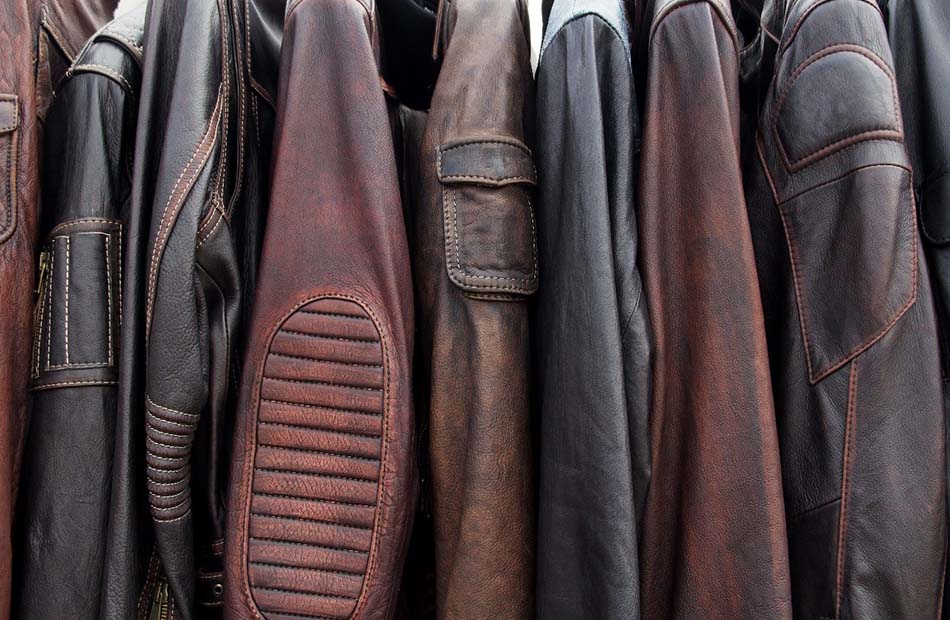Leather might be the most ancient material known to humanity. And the most controversial as well. People learned to make clothes ad even houses out of leather long before they came up with the idea of looms and handicrafts. Throughout its history, leather clothes and accessories have been the symbol of status and wellness of the people who wore them.
However, while technologies were moving forward, people started to get concerned about the overall idea of killing animals for the sake of their skin. It started to become much more costly ad demanding than the developing textile industry and synthetic material manufacture. Not to mention the environmental impact of making clothes ad accessories out of domesticated ad wild animals.
Today you may find lots of alternatives to natural leather. There are all kinds of so-called Vegan Leather, synthetics materials, or eco-leather. But are they that green and cruelty-free? Does the manufacture of a faux-leather jacket cause much less harm to the environment than natural leather crafts?
This article shall overview all types of leather on today’s market and help you understand why it has become such a controversy today.
1.Natural Animal Leather
Let’s mark it from the very beginning – nobody would ever say that animal leather is cruelty-free! We are not even looking at the matter from this perspective. However, specific arguments prove that natural leather will continue existing no matter all animal rights advocates’ efforts. Moreover, the fact that it will exist will somehow help the environment.
People will always eat meat. Its consumption may have reduced during the past several years due to raising awareness of meat production’s environmental impact. Still, the industry will continue existing one way or another. And the skin is a by-product of this industry. So, in a way, the manufacture of leather clothing and accessories may be considered a way to reduce waste production of the industry that already has a horrible impact on the environment.
However, some may fairly say that this is a pretty vague argument as this part of waste reduction for the meat industry is just a drop in the ocean. And, of course, this argument does not relate to leather that comes from wild animals.
Also, the manufacture of leather commodities out of animal skins is a vicious process that involves toxic chemicals, massive pollution, and waste.
However, items made out of natural leather have their advantages over the so-called Vegan or Eco analogs. First of all, genuine leather is exceptionally durable and can be a perfect example of sustainable slow fashion. Leather clothes, accessories, and furniture are used for many years, repurposed, and hardly ever end up in landfills. And even if they do, unlike all the synthetic kinds of leather, animal skins are 100% compostable and biodegradable.
PROS of Natural Animal Leather:
- Decreases waste from meat industry;
- Provides sustainable products;
- Biodegradable and compostable.
CONS of Natural Animal Leather:
- A cruel industry causing whole species to be extinct;
- Toxic and wasteful manufacture;
- 90% of the sector is unethical towards animals, local economies, and employees.
2.Faux Leather or Vegan Leather

This kind of leather originates from Connecticut. A rubber factory in Naugatuck, to be precise. It was invented there in the 1920s and was initially called “Naugahyde”.
Today the term Faux Leather unites all kinds of synthetic materials tailored to look and behave like natural leather in most ways. Those materials are pretty durable, easy to clean, and water-resistant, but they are 100% free from animal cruelty, unlike genuine leather
But is Faux Leather that Eco-friendly? The truth is, the concept of faux leather had skyrocketed in the 1960s when people were fascinated with everything synthetic. Back then, we thought that the fact that we can synthesize any material proves the triumph of progress. However, soon enough, people started to become aware of synthetic materials and their manufacture’s environmental impact. Faux leather became less and less popular along with other manufactured products.
That is when manufacturers decided to concentrate the attention on the “Vegan” aspect of faux leather. However, Fax Leather is made by layering polyurethane (PU) or polyvinyl chloride (PVC) on fabric. Those are synthetic materials that consume lots of energy and are resourced during manufacture and become massive pollution. So, next time you think that no animal has suffered for your faux leather jacket, think twice. All those marine species that extinct or mutate due to toxic waste from PVC and PU plants, birds, and mammals who have to migrate and decrease population because of noise and CO2 emissions are also animals.
PROS of Faux Leather:
- 100% free of direct animal cruelty;
- Has all the features of genuine leather;
CONS of Faux Leather:
- Produced from petroleum-based commodities;
- Hard to recycle and causes microplastic pollution;
- An integral part of the “fast fashion” concept.
3.Biodegradable Vegan Leather
This kind of leather seems to be a compromise between natural and faux leather. It manages to avoid the cruelty of genuine leather manufacture and the ecological impact of petroleum-based materials.
This concept foresees using and recycling various commodities derived from plants to create plastic-free materials that are also compostable. Of course, just like any manufacturer, biodegradable leather production requires a certain amount of energy, resources and produces waste. However, those rates are much lower if you compare biodegradable, vegan leather to faux or even genuine leather.
The development of those technologies raises awareness among manufacturers ad fashion brands about the importance of innovative solutions, encouraging them to invest in new research in ethical and eco-friendly manufacturing.
PROS of Biodegradable Leather:
- Cruelty-free;
- Encourages recycling;
- Uses sustainable commodities;
- Least polluting.
CONS of Biodegradable Leather:
- Still uses petroleum-derived elements in the manufacture;
- The research and development is at an early stage, and demand exceeds offer;
- Less durable than genuine or faux leather.
Of course, it is only up to you which kind of leather to prefer. The choice depends solely on your personal preferences and beliefs. Each type of leather on today’s market has its advanced and points as well as significant pitfalls. Just remember that this matter is never black and white and every person has a right to decide and his reasons to buy and wear certain materials.








0 Comments